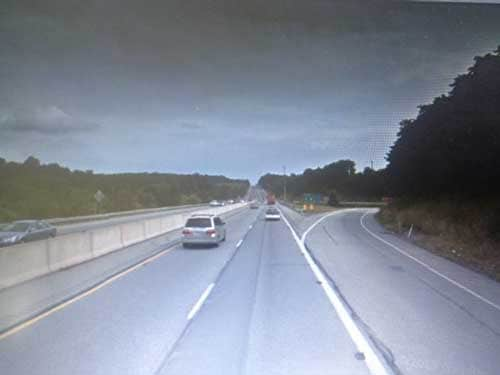Volunteer Fire Chief Struck and Killed on Interstate Highway While Directing Traffic – Pennsylvania
 Death in the Line of Duty…A summary of a NIOSH fire fighter fatality investigation
Death in the Line of Duty…A summary of a NIOSH fire fighter fatality investigation
F2013-12 Date Released: April 22, 2014
Executive Summary
On April 27, 2013, a 45-year-old male volunteer fire chief (the victim) lost his life after being struck by a vehicle on an interstate highway. The victim had shut down the highway with his personal vehicle and was directing traffic onto an exit ramp. The victim’s department was dispatched to assist a neighboring fire department working a motor vehicle incident. The victim’s department was ordered by the incident commander to shut down both southbound travel lanes to allow for an aeromedical helicopter to land on the interstate. The victim responded to the scene in his personal vehicle, used it to block the southbound travel lanes, and diverted approaching traffic onto an off-ramp. A motorist, allegedly under the influence, drove around the victim’s vehicle, striking and killing him. The victim was not wearing a high-visibility retro-reflective vest and a traffic incident management area (TIMA) had not been established.

View of southbound lanes and off ramp where victim was struck and killed.
(Adapted from Google Earth® satellite image.)
Contributing Factors
- Victim working in unprotected travel lane
- Lack of advanced warning to oncoming traffic
- Inconspicuousness of victim and vehicle
- Alleged impaired motorist.
Key Recommendations
- Fire departments should ensure that emergency responders receive training and have adequate staffing, sufficient equipment, and appropriate procedures in place for responding to roadway emergency incidents
- Fire departments should ensure that standard operating procedures/guidelines include guidance on identifying and maintaining a safe location while working in or near moving traffic
- Fire departments should establish pre-incident plans and agreements regarding traffic control and incident management at roadway incidents with other fire departments, EMS, law enforcement, local or state departments of highways, and private sector responders
- Fire departments should ensure that apparatus equipped with high-visibility chevrons and reflective markings are used for blocking to enhance conspicuity and protection of emergency scenes while operating at highway incidents
- Fire departments should ensure that all personnel working at highway incidents wear the appropriate personal protective clothing and equipment, to include high-visibility retro-reflective material
- Motorists should be attentive at all times, especially when approaching and driving through a traffic incident management area, so that they avoid striking emergency responders, other vehicles, or traffic control devices.
The National Institute for Occupational Safety and Health (NIOSH), an institute within the Centers for Disease Control and Prevention (CDC), is the federal agency responsible for conducting research and making recommendations for the prevention of work-related injury and illness. In 1998, Congress appropriated funds to NIOSH to conduct a fire fighter initiative that resulted in the NIOSH “Fire Fighter Fatality Investigation and Prevention Program” which examines line-of-duty-deaths or on duty deaths of fire fighters to assist fire departments, fire fighters, the fire service and others to prevent similar fire fighter deaths in the future. The agency does not enforce compliance with State or Federal occupational safety and health standards and does not determine fault or assign blame. Participation of fire departments and individuals in NIOSH investigations is voluntary. Under its program, NIOSH investigators interview persons with knowledge of the incident who agree to be interviewed and review available records to develop a description of the conditions and circumstances leading to the death(s). Interviewees are not asked to sign sworn statements and interviews are not recorded. The agency’s reports do not name the victim, the fire department or those interviewed. The NIOSH report’s summary of the conditions and circumstances surrounding the fatality is intended to provide context to the agency’s recommendations and is not intended to be definitive for purposes of determining any claim or benefit.
